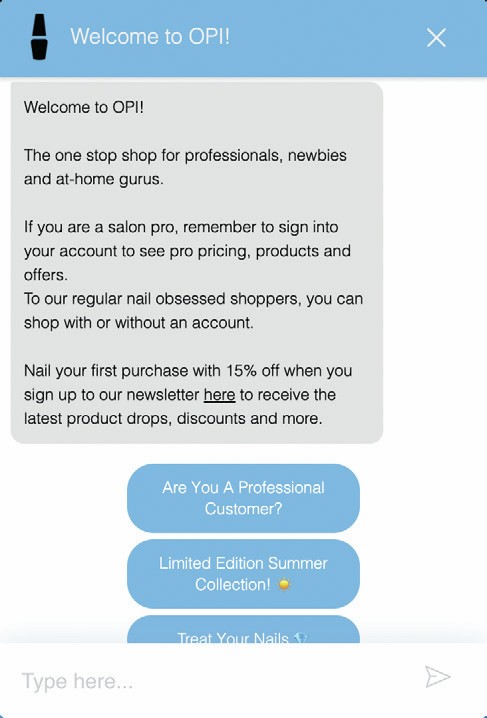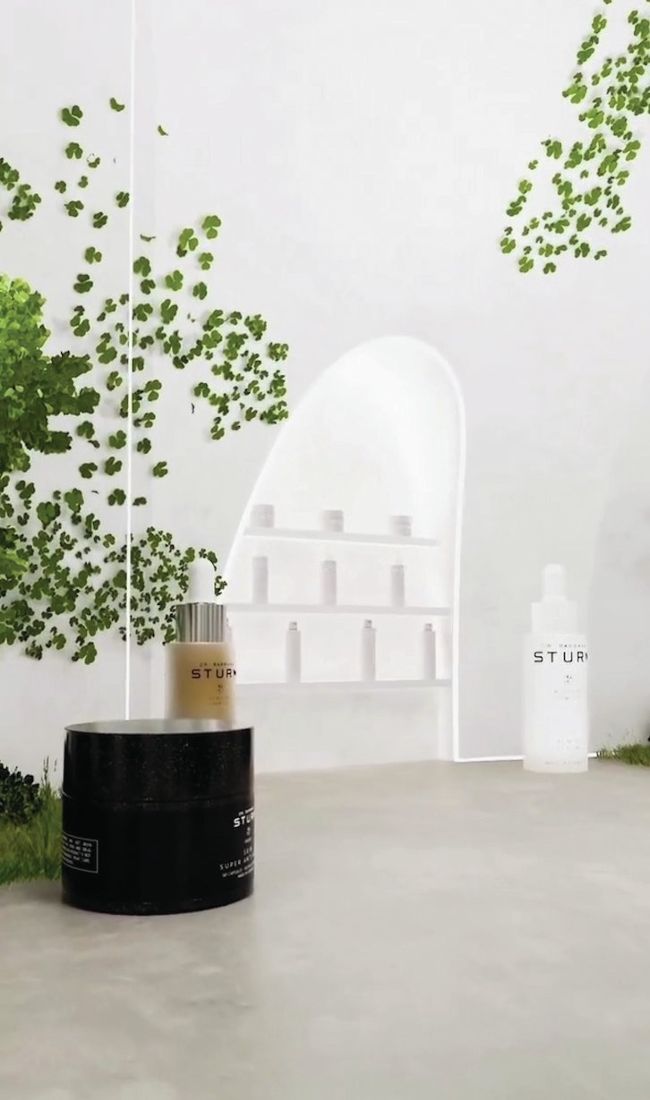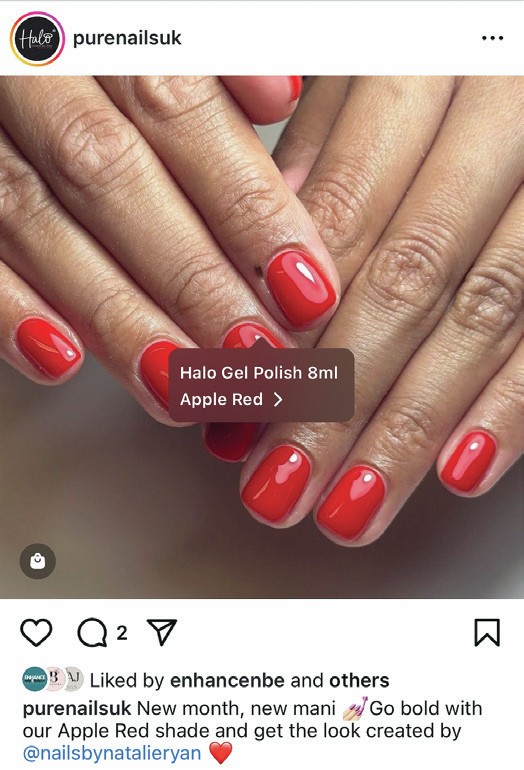TECH-NOLOGY
Tech for Techs
How technology is shaping beauty retail
REBECCA HITCHON gets the scoop on high-tech launches, decodes hot topics & sources tech-savvy tips for your business
The shopping experience has dramatically changed in recent times. Before technology became so advanced, we headed to brick-and-mortar stores and were drawn to purchase by aesthetically pleasing displays and human interaction. Now, things have changed: e-commerce and digital technology guide the buying experience, expedited by the Covid-19 pandemic. Beauty brands, noting the popularity of digital shopping habits, haven’t looked back.
Is it a negative change? That’s a subjective decision. It’s not hard to see how the high street is altering and becoming less of a hotspot for retail. However, statistics show that the high street is hosting more spaces for beauty treatments. Research by policy and research consultancy, Public First, found that the number of beauty and hairdressing salons has increased by 110% on Britain’s high streets since 2010, replacing shops and banks. The company attributed this to the rise of online shopping, and noted that older generations are most discontented with the changes.
The ‘phygital’ experience
Don’t fear – the death of the physical store isn’t happening just yet. Retail agency, Outform, explored the habits of UK, US, French and German beauty shoppers over 12 months, and found that beauty shoppers are now seeking technology-driven, in-store experiences. 85% of respondents said that interactive digital tools, such as screens, QR codes and augmented reality (AR), can help them explore new products and their features. In fact, almost half (49%) of beauty shoppers believe that AR is important in physical stores, and 83% expect digital screens to facilitate product exploration.
But these ‘phygital’ (integrated physical and digital) experiences need to be improved. That’s according to the survey respondents, as 54% want better opportunities to trial and test products. Clare Cryer, Outform’s vice president of growth for EMEA, comments: “The arrival of AI-driven beauty tools will open a new world of personalisation for shoppers and drive the demand for discovery and understanding. It bodes well that shoppers already recognise the value of digital interactions for experience, exploration and education. It’s now up to beauty to deliver the relevant interactions shoppers want.”
So, which technology-driven retail advancements should beauty consumers expect going forward? Let’s explore...
Try-on tools
Virtual try-on (VTO) tools harness the power of augmented reality, to help consumers visualise how a product appears on themselves before buying it. The technology overlays a digital version of a product over a real-time feed of the consumer, and offers a number of advantages for retailers. Consumers become more confident about their purchases, which increases sales – for up to 600% for some brands, it has been reported. VTO technology can be implemented in-store and online, and has been found to reduce online shopping anxiety by up to 40% according to publication, Retail Dive.
This negates the need for physical samples, therefore reducing waste.

Sally Hansen’s virtual nail colour try-on tool, available via
www.sallyhansen.com Virtual try-on technology can reduce online shopping anxiety by up to 40%.
Chatbots
In a 2023 digital retail report by Adobe, it was revealed that 57% of consumers believe chatbots are important, and almost a fifth expressed an interest in purchasing directly through text or chat messaging tools. The benefits of chatbots include offering personalised product recommendations, in turn increasing customer confidence, satisfaction and likelihood to buy. As an AI-driven solution, the tools can analyse huge amounts of data and learn from each interaction, becoming more effective over time at responding to customers’ needs.

The OPI chatbot on
www.opi.com 85% of beauty shoppers say that interactive digital tools can help them explore new products and their features.
Virtual stores
Implemented by a small number of beauty brands at present, virtual shopping offers the experience of a brick-and-mortar shop, but online. Many of these brands established their immersive and interactive digital stores on their websites during the pandemic. So, what are the advantages over conventional e-commerce? It’s the playfulness of the experience – and for brands, they can provide an engaging and memorable way to buy their products, without the need for members of staff to be in a set physical location. Similarly, consumers may not be near to a store, so they can imitate the feelings of physical commerce in a more convenient way.

The Dr. Barbara Sturm ‘Virtual World’, available via
www.drsturm.com, features a main hall, anti-ageing lab, microbiotic room and anti-inflammatory room. Here, consumers can directly purchase products, learn about products and receive skincare tips.
Research by policy and research consultancy, Public First, found that the number of beauty and hairdressing salons has increased by 110% on Britain’s high streets since 2010, replacing shops and banks. The company attributed this to the rise of online shopping, and noted that older generations are most discontented with the changes.
Social shopping
Have you ever looked at the screentime on your phone and thought ‘I spend a lot of time on social media’? Statista research shows that the average daily social media use of global internet users is 143 minutes per day. So, it makes sense that, with a lot of time being spent on these apps, retail experiences have become integrated within them. Statista reports that global social commerce generated over USD $700 billion in 2022, with this shopping format allowing users to quickly and easily purchase products they have discovered. For example, Facebook and Instagram shopping is simple to implement, and means that brands and their users can add product tags to content, to encourage sales.

Nail brand, Pure Nails, shares a design by one of its Halo VIPs on Instagram (@purenailsuk), tagging the product used so pros have a direct link to purchase.